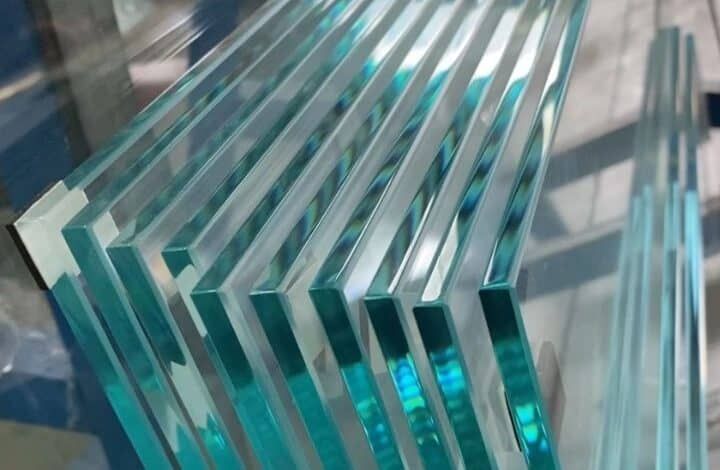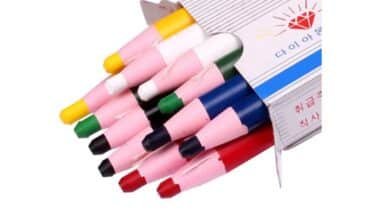
Tempered glass is a widely used material known for its strength, durability, and safety features. Whether in automotive applications, architecture, or everyday household items, tempered glass plays a vital role in ensuring safety and providing a high level of performance. This article explores everything you need to know about tempered glass, including its manufacturing process, advantages, applications, and maintenance tips.
Table Of Contents
- What is Tempered Glass?
- The Manufacturing Process of Tempered Glass
- Advantages of Tempered Glass
- Common Applications of Tempered Glass
- How Tempered Glass Differs from Laminated Glass
- How to Maintain and Care for Tempered Glass
- Final Thoughts
- Table: Comparison of Tempered Glass and Laminated Glass
What is Tempered Glass?
Tempered glass, also known as toughened glass, is a type of safety glass that has been heat-treated to enhance its strength. During the manufacturing process, the glass is heated to a high temperature and then rapidly cooled to create internal pressure, making it much stronger than regular glass. This process increases the glass’s resistance to breakage and makes it safer to use in various applications.
This characteristic makes tempereds glass a safer option compared to untreated glass, which can break into dangerous, sharp pieces. The strength and safety features of tempereds glass make it ideal for various uses in industries like construction, automotive, and even household products.

The Manufacturing Process of Tempered Glass
The process of making tempereds glass is both technical and precise. The steps involved in manufacturing tempereds glass include:
Cutting and Shaping: First, raw glass sheets are cut and shaped according to the required dimensions. The glass is then cleaned thoroughly to ensure it is free of any contaminants.
Heating: The glass is then heated in a special furnace to temperatures of about 650°C (1200°F). This high heat makes the glass more flexible and prepares it for the next step.
Rapid Cooling (Quenching): After being heated, the glass is rapidly cooled by blowing air onto its surface. This rapid cooling process creates compressive stresses on the surface of the glass, making it stronger and more durable.
Finishing: The edges of tempereds glass may be polished or treated to prevent injury.
This process is what differentiates tempereds glass from regular glass, which does not undergo the same high-temperature treatment.
Advantages of Tempered Glass
There are several reasons why tempereds glass is so widely used in various industries. Some of the key benefits include:
Enhanced Strength and Durability
The heat treatment process makes it more resistant to physical impact, making it an ideal choice for applications where durability is essential, such as windows, doors, and shower screens.
Safety
Safety is another major reason why tempereds glass is so popular. Unlike regular glass, which can break into sharp, dangerous shards, tempereds glass shatters into small, rounded pieces when it breaks. This minimizes the risk of injury, making it a preferred option in situations where safety is paramount, such as in vehicles, buildings, and household items.
Heat Resistance
Tempereds glass is highly resistant to temperature changes. It can withstand sudden temperature shifts without breaking, which is why it is often used in kitchen appliances, oven doors, and even car windows, where high temperatures are common.
Clarity and Aesthetic Appeal
Tempereds glass has excellent clarity and provides a polished, clean look. This makes it a popular material for a variety of applications, such as glass tabletops, display cases, and shower doors.
Scratch Resistance
Due to the way it is manufactured, tempereds glass is also more resistant to scratches compared to regular glass. This makes it an excellent choice for high-traffic areas, such as storefronts and mobile devices, where the glass is likely to come into contact with rough surfaces.
Common Applications of Tempered Glass
Tempereds glass is used in a wide variety of industries and applications. Some of the most common uses include:
Automotive Industry
Tempereds glass is used extensively in the automotive industry. Car windows, windshields, and side windows are often made from tempered glass to ensure that they are strong, safe, and able to withstand impact. In the event of an accident, tempered glass shatters into small, rounded pieces, preventing serious injury.
Construction and Architecture
In the construction industry, tempered glass is commonly used in windows, doors, and facades due to its strength and durability. It is also used for glass partitions, skylights, and balustrades. The increased safety features make it particularly useful in high-rise buildings and public spaces.
Interior Design
Tempereds glass is widely used in interior design for furniture and decorative elements. Glass tabletops, shelves, and cabinet doors are often made from tempered glass to ensure safety and longevity. Its sleek, transparent appearance makes it an attractive choice for modern and minimalist design.
Electronics
Many smartphones, tablets, and other electronic devices use tempereds glass for their screens. This provides extra durability, protecting the device from accidental drops and scratches. The high clarity and smooth finish of tempereds glass also make it ideal for touchscreens.
Shower Doors and Partitions
Tempereds glass is a popular choice for shower doors and partitions because of its resistance to water and humidity. The strength of tempereds glass ensures that it can withstand the impact of daily use, while its transparency helps create a spacious and open feel in the bathroom.
Home Appliances
Oven doors, stovetops, and microwave doors are often made from tempereds glass because it can handle high temperatures without breaking. The heat resistance and durability of tempered glass ensure that it can endure the extreme conditions within home appliances.
How Tempered Glass Differs from Laminated Glass
While tempereds glass is known for its strength and safety, it is important to understand that it is different from laminated glass. Both types of glass are commonly used in safety applications, but they have distinct characteristics:
| Property | Tempered Glass | Laminated Glass |
| Strength | Stronger than regular glass, can withstand impacts. | Strong, but designed for security and preventing glass from shattering. |
| Safety | Shatters into small, blunt pieces. | Stays intact even when cracked due to the interlayer. |
| Usage | Used for windows, automotive glass, and appliances. | Common in windshields, skylights, and security windows. |
| Appearance | Clear, with excellent transparency. | Appearance due to the interlayer. |
| Temperature Resistance | Can withstand high temperatures. | Resistant to heat but not as much as tempereds glass. |
How to Maintain and Care for Tempered Glass
Tempereds glass is relatively easy to maintain, but proper care is essential to ensure its longevity. Here are some tips to keep your tempereds glass looking great:
1. Cleaning
To clean tempereds glass, use a soft cloth or microfiber towel and a mild glass cleaner. Regular cleaning will help maintain its shine and clarity.
2. Avoiding Impacts
While tempereds glass is strong, it is not completely indestructible. Avoid placing heavy objects on top of glass surfaces or subjecting them to excessive force. Even though tempereds glass shatters into small pieces when broken, it’s still better to handle it with care.
3. Handling During Installation
When installing tempereds glass, be sure to follow the manufacturer’s guidelines to prevent damaging the glass. Proper installation is crucial to ensure its strength and performance.
4. Protection from Scratches
While tempereds glass is resistant to scratches, it’s still a good idea to avoid dragging rough objects across its surface. Using coasters, placemats, and other protective barriers can help prevent scratches on glass furniture and tabletops.
Final Thoughts
Tempereds glass is a versatile and indispensable material with numerous applications in everyday life. From its strength and safety features to its aesthetic appeal and ease of maintenance, tempereds glass has become an essential component in industries ranging from construction to electronics. Its ability to withstand impact, temperature changes, and physical stress makes it a reliable and safe option for various uses. Whether you’re using tempereds glass in your home, car, or workplace, understanding its benefits and characteristics can help you make the most of this remarkable material.
Table: Comparison of Tempered Glass and Laminated Glass
| Feature | Tempered Glass | Laminated Glass |
| Strength | Stronger and more impact-resistant. | Strong but designed to remain intact upon impact. |
| Safety | Breaks into small, blunt pieces. | Retains its shape even when cracked due to the interlayer. |
| Application | Windows, vehicles, appliances, and furniture. | Used in security windows, skylights, and car windshields. |
| Durability | Highly durable but can break under extreme impact. | Less likely to break, more suitable for security. |
Whether you’re considering tempereds glass for your home or business, understanding its unique properties and benefits will help you make informed decisions about its applications.




